FRACAS, or Failure Reporting, Analysis, and Corrective Action System, is a closed-loop management system to organize and track your process for handling and resolving issues that arise. The process is initiated with the logging of an incident, progresses through issue analysis, determining corrective action, implementing the recommended resolution, and concludes with verifying that the issue has been resolved. The core objective of FRACAS is to ensure that the process for handling issues is well-managed, controlled, trackable, and consistent.
Though the FRACAS term dates back to the 1980’s with the establishment of MIL-STD-2155 by the US Department of Defense, it is now widely used and recognized as an effective approach in industries beyond the military and defense sector. FRACAS falls under the umbrella of closed-loop corrective action processes.
There are many way to implement FRACAS, often based around well-accepted process management methodologies. In some cases, FRACAS is performed in order to meet compliance requirements, such as the quality requirements for ISO 9000 certification requiring the use of a closed-loop corrective action system. In other cases, FRACAS is implemented to meet supplier requirements or internal quality objectives. These varying situations mean that FRACAS can look different from one organization to the next. This is a key element of FRACAS: it is flexible by nature and is configured to meet your own specific needs.
Due to its inherent configurability, setting up a FRACAS to operate based on your requirements is an important part of the process. While flexibility is an advantage, it also means that thorough thought and preparation are key. Otherwise, the system becomes inefficient and does not achieve intended goals. In this article, we’ll discuss a best practices approach for FRACAS implementation to ensure that it is set up for success.
Implementing a Successful FRACAS: The 5 Key C’s
When first implementing a FRACAS, an organized process is essential. A best practices approach involves five key steps, easily remembered as the 5 Key C’s for Success. It should be noted that this methodology can also be applied if you are looking to revise an existing FRACAS.
The 5 Key C’s for FRACAS Success are:
- Compile the Team
- Collect the Requirements
- Create the Plan
- Construct the Solution
- Continually Improve
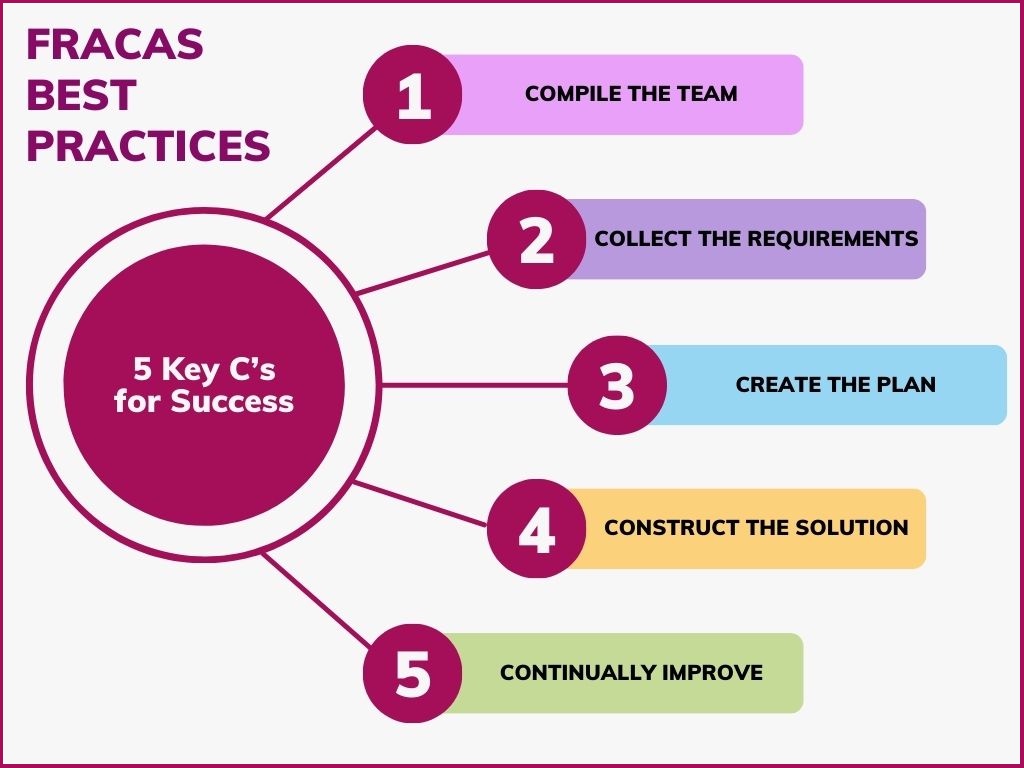
Step 1: Compile the Team
Creating a team of stakeholders is crucial for the success of any project or initiative, and this is especially true for FRACAS. Consider all those who will be involved in using your FRACAS and ensure that at least one representative from each area is present as part of the FRACAS team. The FRACAS team should have members comprised from all aspects of the FRACAS process: data entry, root cause analysis, issue resolution, verification, as well as high-level oversight.
All members should be part of the FRACAS process design in order to make sure their needs are taken into account.
For example, some team members will be responsible for logging incidents. That could mean customer service personnel, service and repair team members, testing and QA engineers, and others. Make sure to think about all those who may be part of data entry and be sure to actively involve them in the process.
Allowing for team diversity means more innovation, more problem-solving, and better decision making. All of these factors lead to more robust solutions. Additionally, this helps foster a sense of ownership among all team members. Team members will realize that their concerns are addressed and will be more likely to support the system and want it to succeed.
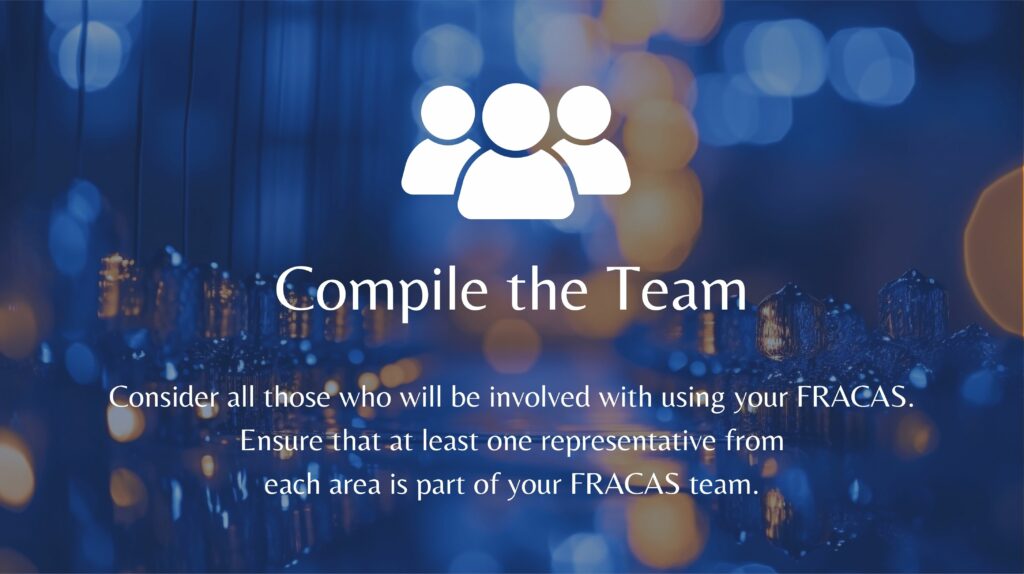
Step 2: Collect the Requirements
Once the team is assembled, the next step is to gather the requirements of all the stakeholders. This process may be lengthy if the team is large. However, more time spent on this upfront task will ensure the following steps flow smoothly and the ultimate solution will meet your needs.
The requirement gathering can be done however best suits your organization. With the distributed workforces of today’s businesses, online meetings may be useful. Or you may designate a team lead to gather each group’s needs and then compile a list to review. Doing some upfront organizing prior to a team meeting can significantly help facilitate the process.
Once the list of requirements is collected, it is important to prioritize and consolidate the items as much as possible. It is helpful to separate requirements into “must have” versus “nice to have.” Focusing on the “must haves” first will enable you to create an initial rollout that meets the most important objectives. Other features can then be designated for later revisions.
It is critical that all team members agree on the set of requirements that will be used for initial development. This helps team members understand each other’s needs and ensures all team members will contribute to the success of the project.
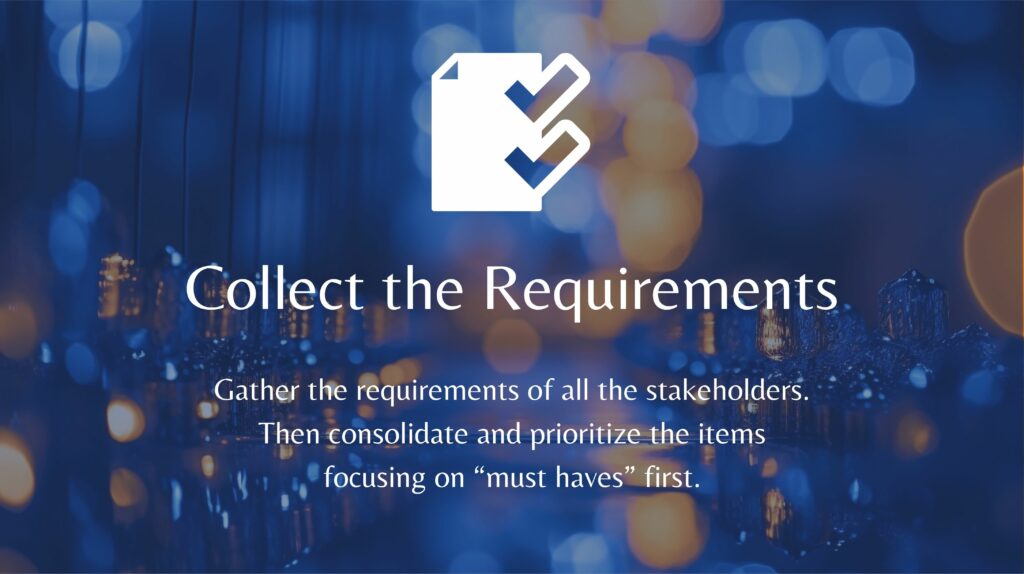
Step 3: Create the Plan
With requirements in hand, it is then time to create a plan for the FRACAS design. As mentioned previously, while the flexible nature of FRACAS is advantageous, it can also make the task of defining the system challenging. For this reason, oftentimes organizations will turn to proven process management methodologies such as 8D, PDCA, and DMAIC. These methodologies can be used as-is or as a starting point before being adapted to your specific needs. Or in some cases, a completely custom solution is the most appropriate choice.
A helpful way to start to create a FRACAS implementation plan is to review all the requirements and consider all the necessary outputs. For example, if you have compliance requirements, there may be certain reports that are required. Or if your organization deals with audits, there may be audit reports or records needed. If you want your FRACAS to be able to track metrics or spot trends, there may be data that must be collected in order to handle those analyses. When the required outputs are clarified, the task of describing the necessary inputs is more easily accomplished.
An additional part of the planning stage should include how you intend to roll the system out within your organization. Oftentimes a rollout plan is defined to allow time for the FRACAS team to introduce the process to team members and provide training if necessary. In some cases, the rollout may include just a few key team members in order to solicit early feedback and make modifications prior to full scale use.
Your plan should have your FRACAS process mapped out from start to finish. You should know what data is to be collected and how the data input forms will be presented. You will have a list of outputs including reports, graphs, calculated metrics, or trend scores, which will be available. The process workflow and rollout plan will also be defined.

Step 4: Construct the Solution
Once the plan is created, it is time to build the solution as specified. There are some important decisions to make at this point. You will need to consider if it is best to build your own system or use a COTS (commercial off-the-shelf) solution. Our informative article on this subject can help you understand your options and provide guidance on how to make your choice. You will also need to determine if you should use a cloud-based system or a local installation.
Based on your choice, assemble the appropriate team to construct your FRACAS solution. Providing the team with the clear roadmap you have compiled allows for a smooth implementation process. Depending on your implementation, the team may include software engineers, IT personnel, and engineers who will use the platform. It is also advisable to include team members whose job it is to test out the solution so you can be assured that it functions as intended and meets expectations.
Once construction is complete, follow your rollout plan to start using your well-crafted FRACAS!
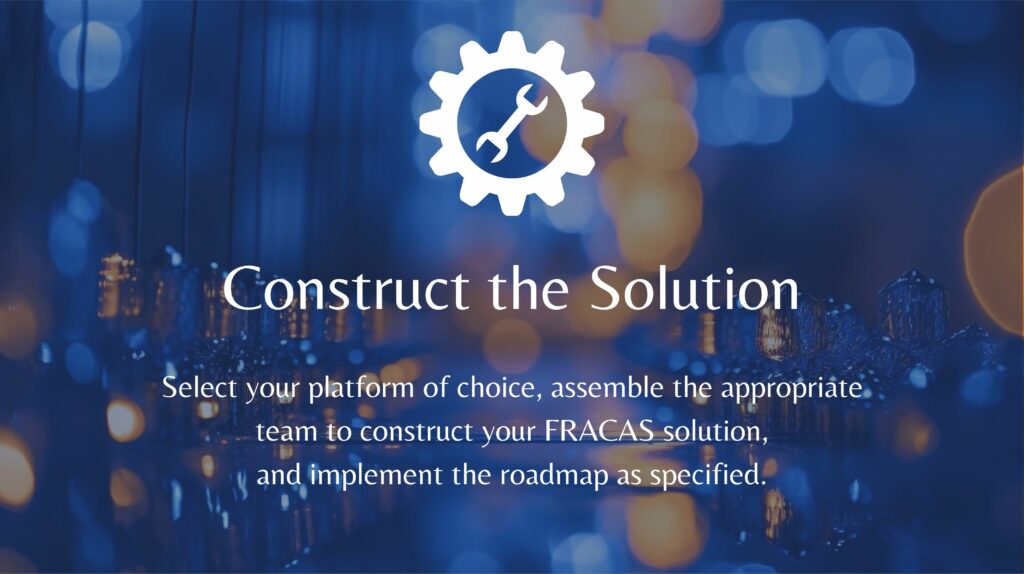
Step 5: Continually Improve
Your FRACAS should be considered a continually evolving system. Once implemented and deployed, solicit feedback from team members on ways to improve the system. After FRACAS has been in use for some time, team members may identify new ways to enhance the system to make their task easier or improve the process.
Remember to revisit your “nice to have” list from requirements gathering in Step 2. Develop a plan to add those that will help improve your FRACAS process.
Also, as you accumulate data in your FRACAS, you may recognize ways to use that wealth information in new and helpful ways. With its built-in adaptability, your FRACAS can be updated over time to be more and more beneficial for your organization.
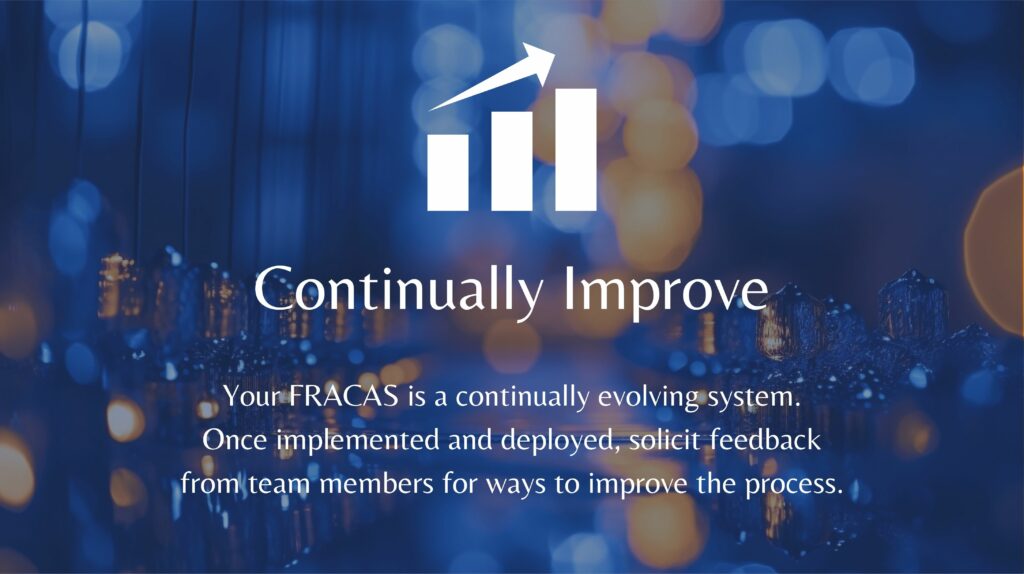
Relyence FRACAS
Relyence FRACAS offers a robust platform for tracking and managing your corrective and preventive action process. While Relyence FRACAS is an off-the-shelf software tool, its flexible platform is easily customizable to meet your requirements. It offers out-of-the-box support for the most widely accepted process methodologies including 8D, DMAIC, and PDCA. You can tailor any of the included templates or create your own completely unique process. Additionally, Relyence FRACAS offers a wealth of features for utmost efficiency that ensure you are getting the most possible from your system.
You can choose to customize Relyence FRACAS on your own, or you are welcome to work with our professional services team to help with your implementation. Our experienced team can offer guidance, advice, customization services, and training.
For more information, feel free to contact us to speak with our knowledgeable team, schedule your own personal webinar, or sign up today for a free trial.





